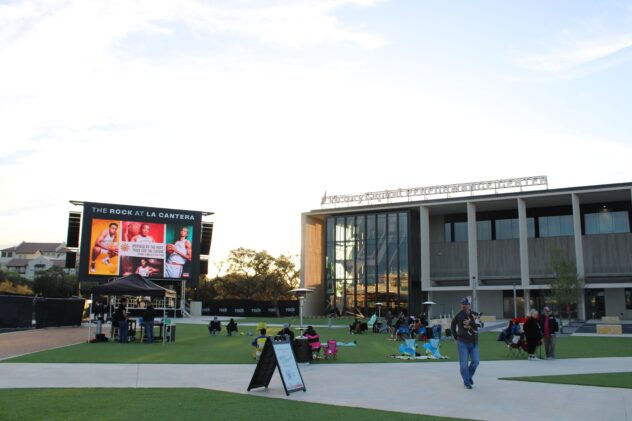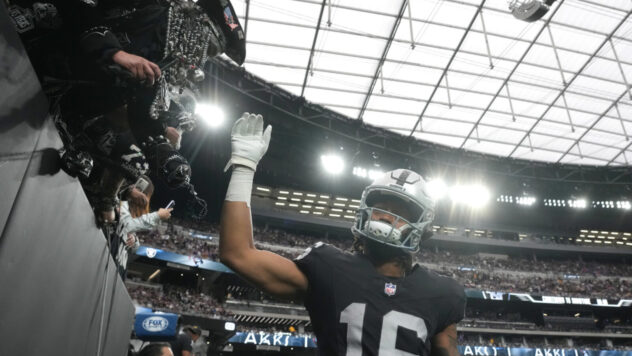How much does a team belong to its city?

Gregg Popovich teased it few weeks ago and on Tuesday it became official, with Bexar County giving the Spurs the green light to play two more home games in Austin, and one overseas, through each of the next two seasons.
The decision helps advance the team’s stated vision “to purposefully engage and celebrate our entire Spurs following from Mexico to Austin, while fostering the next generation of fans,” as SS&E CEO R.C. Buford put it last year. It’s also a Rorschach Test for anyone who already felt one way or another on the topic: good for the team’s financial outlook, great for Spurs fans living in Austin or Mexico City, fun for people into a bit of spectacle, and doom for anyone entertaining scenarios of the team skipping town. While such an ambitious, if not unprecedented, fangrab probably shouldn’t feed into the latter concerns, it’s okay for it to also still not sit quite right with locals.
And to be clear, this does feel uniquely audacious, for the Spurs or anyone. It is just 3 of 41 regular season games, but teams rarely make so concerted an effort to woo another regional market, much less another country. Maybe it’s San Antonio’s niche as a small TV market and proximity to both a thriving (and team-less) city and relatively untapped market in Mexico; maybe it’s also a reaction to the financial climate, the timing with them rebuilding, or the fact that they’re being backed by an increasingly diversified ownership group, or all of the above — this isn’t meant to be a sports biz post, although it may pretend to be at times.
Either way, as a corporation seeking more revenue as much as a team looking to grow its base, this is bold but savvy business. We also now see the push as something more than another wrinkle in the organization’s 50th anniversary celebration but a long-term, or at least indefinite, play.
For Bexar County Judge Peter Sakai (as well as likely a large chunk of the fanbase), the bar to clear was the team’s commitment to staying in San Antonio: “I take them at their word. Bexar County is their home for the long haul… I believe today’s action is about trust, and I trust the San Antonio Spurs.”
That is a critical bar to clear, but it’s also what frames how teams have leveraged municipalities, often benefiting greatly from public funds and tax loopholes that subsidize the constructing of their immensely expensive facilities. The Spurs are no exception, with reports of significant funds afforded to the initial construction of the AT&T (née SBC) Center in 2002, significant facility upgrades in 2014, and, to a lesser extent, their new practice facility and human performance campus on the north side of town. For teams, the benefit is clear and quantifiable; for cities and resident taxpayers (fans and non-fans alike), it’s a murkier transaction. Something about the team’s economic and sentimental impact on the city, with a dash of hope for development and prosperity in the area around the arena.
The trade-off is impossible to unpack, which makes it perfect within the context of sport, something that’s inherently bloated and clouded by emotion. An NBA arena isn’t critical infrastructure, but just try and put a dollar value on the Memorial Day Miracle or 2014’s redemption run. As they look to grow their footprint in the years to come, the Spurs should want to create new exhilarating moments in those satellite markets, moments that would normally belong — again in a more visceral but intangible way — to the fans and residents of San Antonio.
To the Spurs’ credit, the investment in The Rock at La Cantera complex is nothing to gloss over. It’s meaningful as a multi-use space, research center and job creator, as well as a statement of purpose for remaining in San Antonio. While there was minimal transformation in the area surrounding the AT&T Center, the money, anticipated impact on the community, and timely commitment with this new development all carry weight.
There’s a reason people end up on different sides of this, or none at all. Does a team owe 39, 40, 41 regular season games in the home its residents helped build? Do residents prioritize a long-term promise over a few self-serving liberties in the short term? Do they have a choice? (They do, in theory, but they probably wouldn’t like the alternative.) It’s probably wisest to settle somewhere in the middle, selectively critical of decisions by both team and government, optimistic of the Spurs’ future in San Antonio, with a healthy cynicism for the economics that underpin it.
















